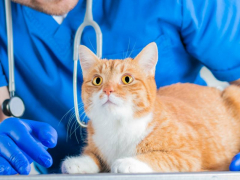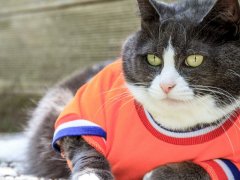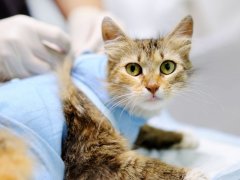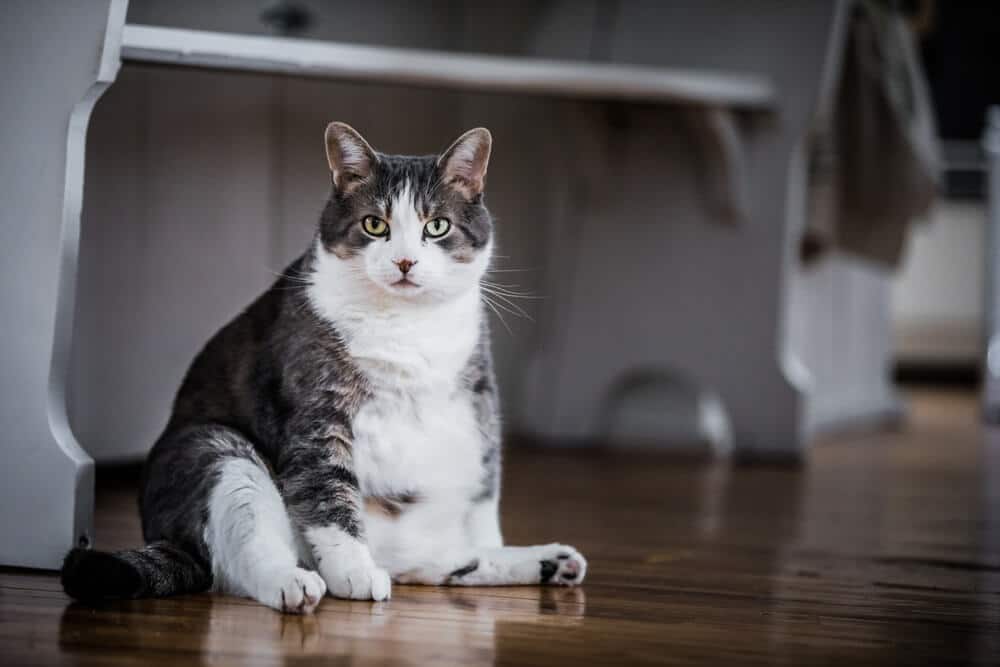
How do you know if your cat is obese or at a healthy weight?
It’s difficult to give guidelines for a cat’s weight, as body frame size can be so variable between individuals.
The simplest answer to maintain a healthy weight is to use a chart that allows you to use a scoring system to determine your pet’s Body Condition Score (BCS). You can also try a calculator like this one.
Purina, the pet food company, was one of the first to highlight the usefulness of these charts.
BCS charts use a numerical scale to grade a cat’s body condition. A number of different aspects of the cat’s body are assessed, and based on these findings, the cat is ranked from either 1-5 or 1-9, with the lowest number being the leanest, and the highest number indicating the most obese. The ideal body condition is the mid-point number.

There Are Two Main Ways Of Evaluating Your Pet’s Body Condition:

First, a visual appraisal.
Look at your cat from above, from the side, and from behind.
From above, your cat’s chest should be wider than their abdomen, and their pelvic area should be wider than their waist, creating a type of hourglass appearance.
From the side, your cat’s chest should be wider than their abdomen, creating a type of wedge or triangular shape.
From behind, you should not be able to see the abdomen protruding on both sides.
Second, run your hands over your cat’s body, so that you can carry out an appraisal using physical touch. You should be able to feel the outline of the underlying bones, but they should be under a thin layer of fat, rather than protruding in a visible manner. If you can’t feel the bones, then this means there is too much fat covering them.
Read Below For A Detailed Description Of The Various Body Condition Scores, From Thinnest To Most Obese.
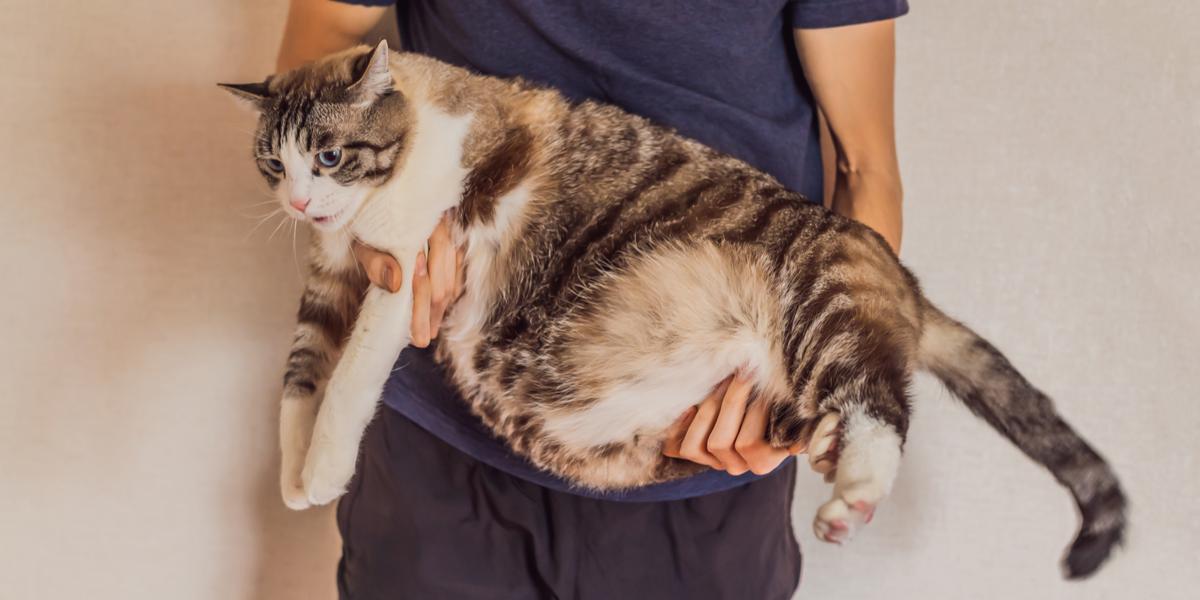
Emaciated: The bones can be seen from a distance, with ribs, spine, and pelvis protruding. There is no fat covering, and the muscles are visibly less bulky than normal. When you feel your cat’s body, the bones are very easily felt. When viewed from above, the side, and behind, it is obvious that your cat is very underweight, to the point of being skeletally thin.
Very thin: The outlines of the ribs, spine, and pelvis can be seen when looking at your cat, and they are very easy to feel if you lay your hand on your pet. Your cat has a very obvious waist from above, and the abdomen is tucked up high when viewing from the side. The muscles appear underdeveloped.
Thin: The ribs can be easily felt when you place your hands on your cat’s side, with no overlying fat. The bones of the spine and pelvis can be seen. The waist is very obvious when your cat is viewed from above.
Underweight: The ribs can be easily felt, and the waist is very obvious when the cat is viewed from above. The abdomen appears tucked up when viewing from the side.
Ideal: You cannot see the outline of the ribs when looking at your cat, but they can be easily felt when your hands are placed on your cat’s sides. You can feel a fine coating of fat overlying the bones. You can see your cat’s waist when viewing from above, and the abdomen is tucked up when viewing from the side. When viewed from behind, the abdomen does not protrude on either side. Your cat’s muscle development is normal.
Overweight: The ribs can be felt. but it’s obvious that they are covered in a layer of cat. The waist is just visible from above. The abdomen is still tucked up when viewing from the side.
Heavy: The ribs are difficult to feel beneath the fat covering. There are visible fat deposits over the lower back and over the base of the tail. There is no visible waist when viewing your cat from above. The abdomen is not tucked up anymore, so the abdomen appears rounded from the side. When viewing from behind, the abdomen bulges out on both sides.
Obese: It’s difficult to feel the ribs, even when pressing firmly with your fingers. There is no visible waistline so that the body outline extends straight back from the ribs to the pelvis, or it may even be convex on both sides. The abdomen is rounded rather than tucked up, and a pot-belly type of shape is seen when viewing the cat from behind.
Also Read: Feline Obesity – Causes, Symptoms & Treatment
Severely obese: The ribs cannot be felt, even when pressing very firmly with your fingers. There is no visible waistline, and the body outline is convex, even almost spherical, when viewed from above. The abdomen is very rounded when viewed from the side, and a spherical, pot-belly contour is seen when viewing the cat from behind.
Click here to use our cat weight calculator and determine if your cat is at a healthy weight.
Why Should You Use A Cat Obesity Chart?
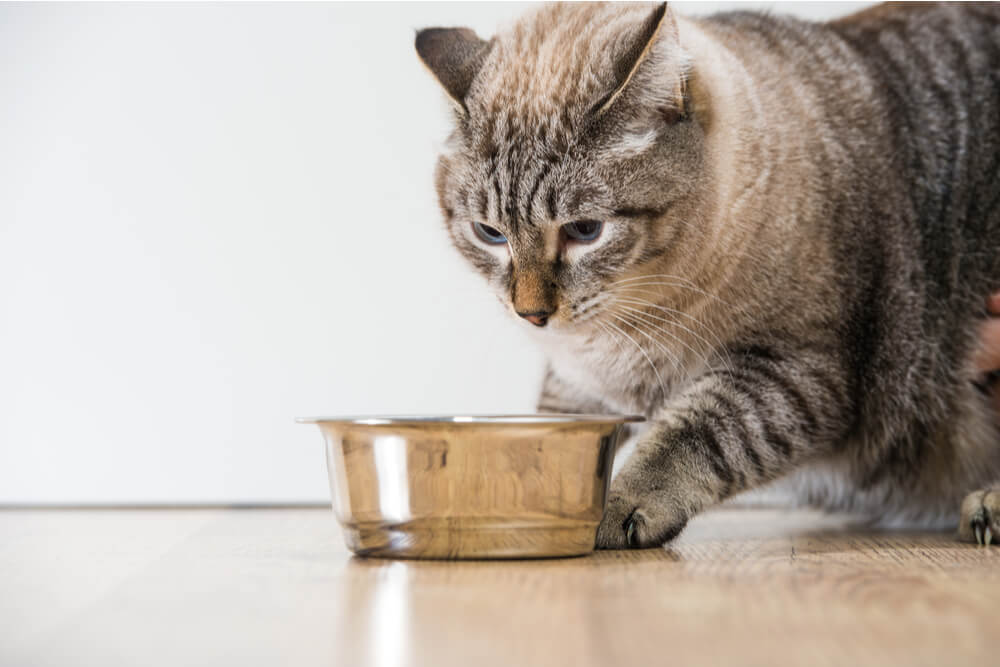
Being overweight or obese can cause serious health issues, including an increased risk of illness and death.
One of the most important aspects of pet care is to ensure that animals under our care maintain optimal body weight. In the western world, obesity is frighteningly common.
Weight gain can happen slowly and insidiously. Up to two-thirds of pets carry extra weight, and animals that are overweight or obese carry an increased risk of morbidity (falling ill) and mortality (premature death). Neutered cats are more prone to gain weight, and most pet cats are neutered these days.
Common health problems that are more likely to affect overweight and obese cats include diabetes, arthritis, heart disease, osteoarthritis, high blood pressure, and skin disease.
Studies have shown that pet cats that maintain a healthy weight have a better quality of life, and live significantly longer than those that are overweight or obese.
So if you want your cat to live their best and longest possible life, you need to ensure that they are as close to their ideal body weight as possible. Overweight cats should be encouraged to undertake a safe weight loss program.
Cats, as obligate carnivores, have a unique type of metabolism which means that weight loss needs to be planned carefully: if a fat cat suddenly stops eating, either from the restriction of food supply or by being offered a special type of food that they dislike, they can suffer from a dangerous condition called hepatic lipidosis.
Veterinary medicine has learned that the best way to help cats with weight management is to combine careful dietary modification (e.g. a dry food or wet food that is low in carbohydrates) with increased physical activity. Feline obesity is best tackled by working with your local DVM veterinarian, with close monitoring of wellbeing and body mass/ body fat over weeks and months.

